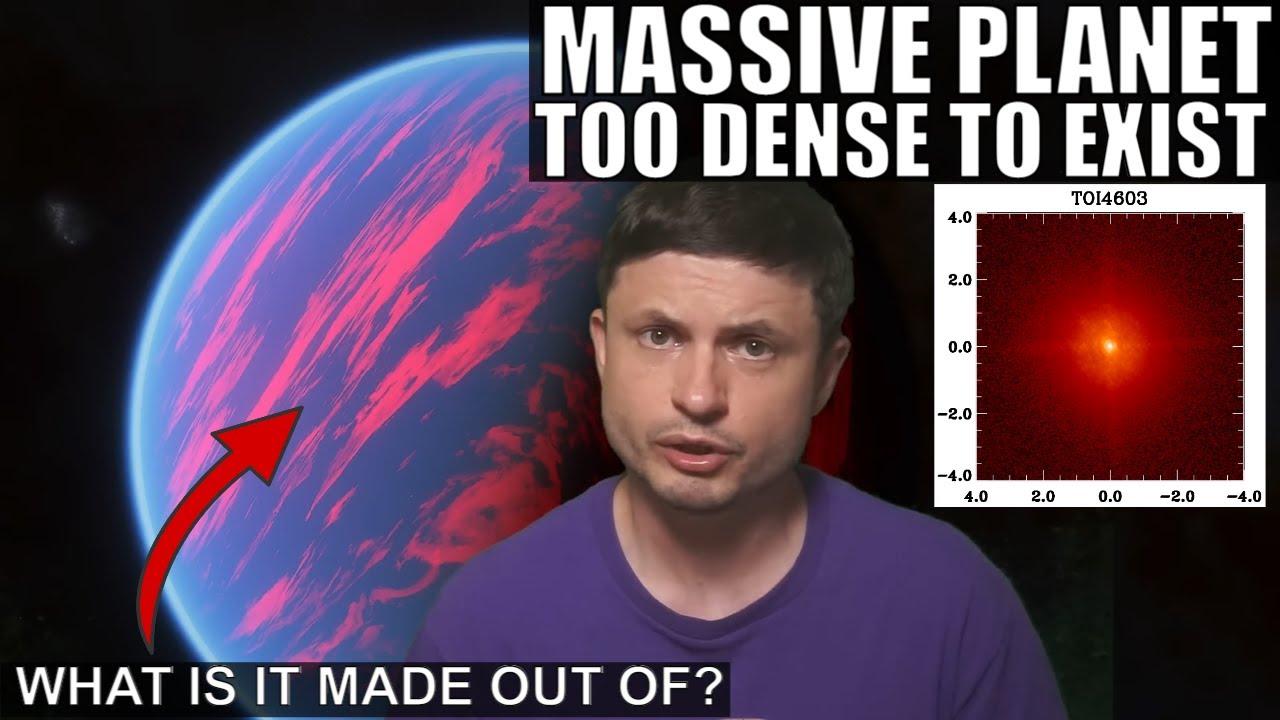The sub-giant star TOI-4603 is orbited by a planet discovered by the Transiting Exoplanet Survey Satellite (TESS). The planet, almost precisely the size of Jupiter (size can be measured accurately by the light curve at the start and end of transit events), orbits its star every 7.25 days. Its mass can be measured by observing the radial velocity change of the star’s spectrum as the planet orbits and tugs on the star, and is found to be around 12.89 times the mass of Jupiter with an uncertainty of ±0.58 Jupiter masses. This works out to a mean density of 14.1 gram/cm³.
This is just a stunning figure. Gas giant planets usually have densities around that of water (1 g/cm³): Jupiter’s density is 1.326 g/cm³ and Saturn’s just 0.687 g/cm³—Saturn would float if you could find a big enough bathtub to hold it. Rocky terrestrial planets are more dense: Earth’s density is 5.534 g/cm³, with Mercury and Venus about the same, while smaller Mars is 3.9 and the Moon 3.3 (indicating these worlds do not have iron cores proportionally as large as the bigger planets).
If this density estimate is correct, and not the result of some error in observation or analysis, one immediately wonders, “Just what the heck is this thing made of, anyway?” Among the ten chemical elements most common in the universe, iron, the heaviest, has a density of only 7.874 g/cm³, a bit more than half as dense as this planet. Even if the planet were made of solid lead, its density would only be 11.35 g/cm³. The mass of the planet puts it on the boundary between gas giants and brown dwarf stars, so perhaps it has undergone gravitational contraction sufficient to increase its density but insufficient to start thermonuclear fusion that would inflate its size.
The research paper is “Discovery of a massive giant planet with extreme density around a sub-giant star TOI-4603”.
